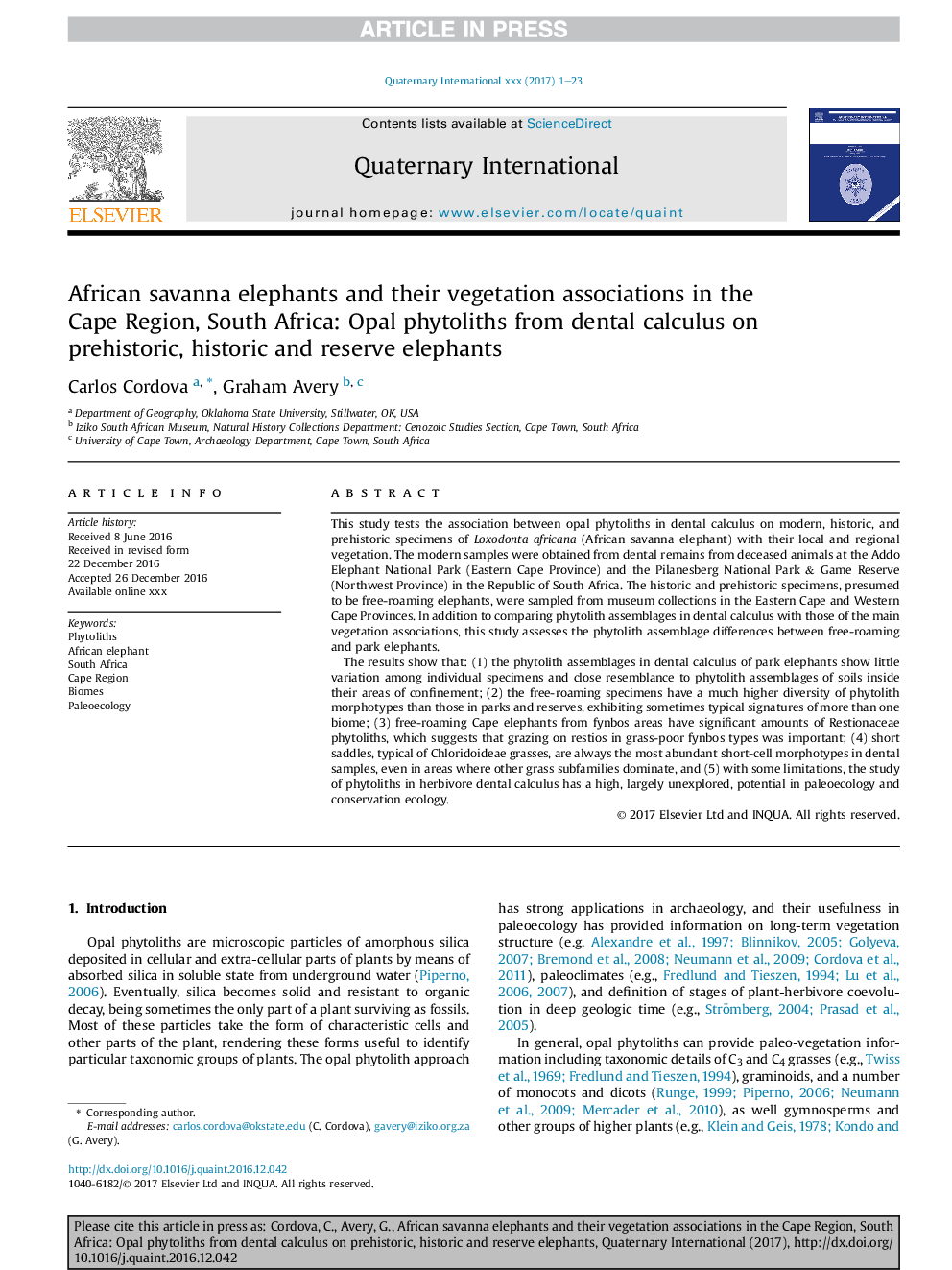| Article ID | Journal | Published Year | Pages | File Type |
|---|---|---|---|---|
| 5113165 | Quaternary International | 2017 | 23 Pages |
Abstract
The results show that: (1) the phytolith assemblages in dental calculus of park elephants show little variation among individual specimens and close resemblance to phytolith assemblages of soils inside their areas of confinement; (2) the free-roaming specimens have a much higher diversity of phytolith morphotypes than those in parks and reserves, exhibiting sometimes typical signatures of more than one biome; (3) free-roaming Cape elephants from fynbos areas have significant amounts of Restionaceae phytoliths, which suggests that grazing on restios in grass-poor fynbos types was important; (4) short saddles, typical of Chloridoideae grasses, are always the most abundant short-cell morphotypes in dental samples, even in areas where other grass subfamilies dominate, and (5) with some limitations, the study of phytoliths in herbivore dental calculus has a high, largely unexplored, potential in paleoecology and conservation ecology.
Related Topics
Physical Sciences and Engineering
Earth and Planetary Sciences
Geology
Authors
Carlos Cordova, Graham Avery,
